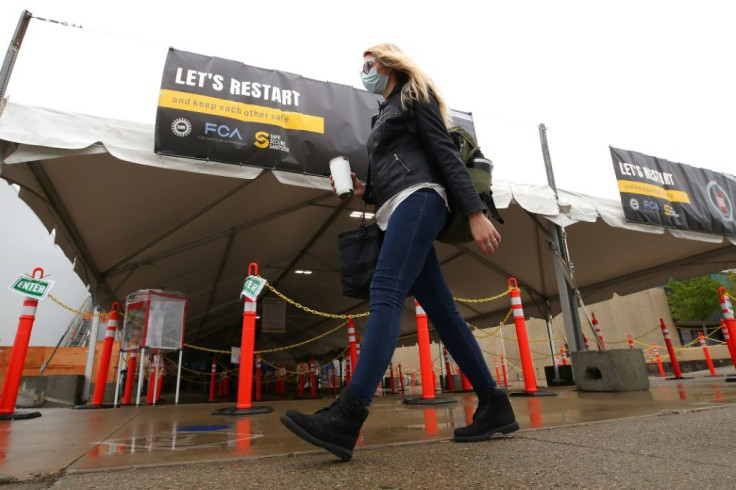Fed Warns Of 'Highly Uncertain' US Outlook As Virus Surges
The US economy showed signs of life nationwide last month, but has not returned to its pre-pandemic level and the outlook remains "highly uncertain," the Federal Reserve said Wednesday.
Businesses began to reopen and retail sales improved across the country, but there were some new layoffs and employment and industrial production were far below where they were before virus struck and caused stunning declines in the second quarter.
"Economic activity increased in almost all districts, but remained well below where it was prior to the COVID-19 pandemic," the Fed said in its "beige book" survey.
"Outlooks remained highly uncertain, as contacts grappled with how long the COVID-19 pandemic would continue and the magnitude of its economic implications."
A separate monthly report showed total industrial output jumped 5.4 percent compared to May, but in the April-June quarter, which included the worst of the outbreak so far, production collapsed at an annual rate of 42.6 percent, "its largest quarterly decrease since the industrial sector retrenched after World War II," the Fed said.

The beige book survey was conducted before July 6. Along with the other data, it reflects the period when case counts were just starting to spike in states like Florida, Texas and Arizona, and as local authorities began to roll back moves to open their economies.
As the Fed prepares for its next policy meeting later this month, the reports show that even with bright spots in auto and home sales, there were signs of trouble ahead, and economists warn that it will take time for the world's largest economy to bounce back.
"The road to a full recovery will be much more uneven compared to the initial strong bounce of the past two months that was prompted by the relaxation of lockdowns," said Oren Klachkin of Oxford Economics.
"The virus' resurgence in many states in recent weeks has already led to the re-imposition of social distancing measures that will drag on the recovery and bolster already significant headwinds facing the industrial sector" in the second half of the year.

The Fed survey showed while employment recovered in most of the country, "Contacts in nearly every district noted difficulty in bringing back workers because of health and safety concerns, childcare needs, and generous unemployment insurance benefits."
In addition, while some firms were able to maintain their employees using the government grants through the Paycheck Protection Program, they were unsure if they would be able to keep workers on payroll, indicating "the strength of demand would determine whether they can avoid layoffs."
The central bank is unlikely to change its approach, since the Fed already slashed the benchmark interest rate to zero early in the pandemic, and has pumped trillions of dollars in loans and cash into the financial system and the broader economy to prevent a severe recession from becoming a depression.
Fed officials have stressed that further support from the government could play a vital role in boosting the chances of recovery.
Monthly data reports have offered promising signs of at least a temporary recovery, including the New York Fed's manufacturing index released Wednesday that posted its first positive reading since February.
Ian Shepherdson of Pantheon Macroeconomics said that while the figures were encouraging, "We expect slower progress over the next few months, given abundant evidence that the broad economy has slowed over the past year."
Nationwide, Fed data showed manufacturing surged 7.2 percent last month, but fell at an annual rate of 47.0 percent in the second quarter.
The gain in June was driven by the rebound in the auto sector, which had shut down in the early stages of the pandemic, and then reopened with new restrictions to protect workers.
However, production of motor vehicles and parts remained nearly 25 percent below its February level.
Mining, including oil and gas production, fell 2.9 percent in the month and declined 42.7 percent in the quarter.
© Copyright AFP 2024. All rights reserved.











